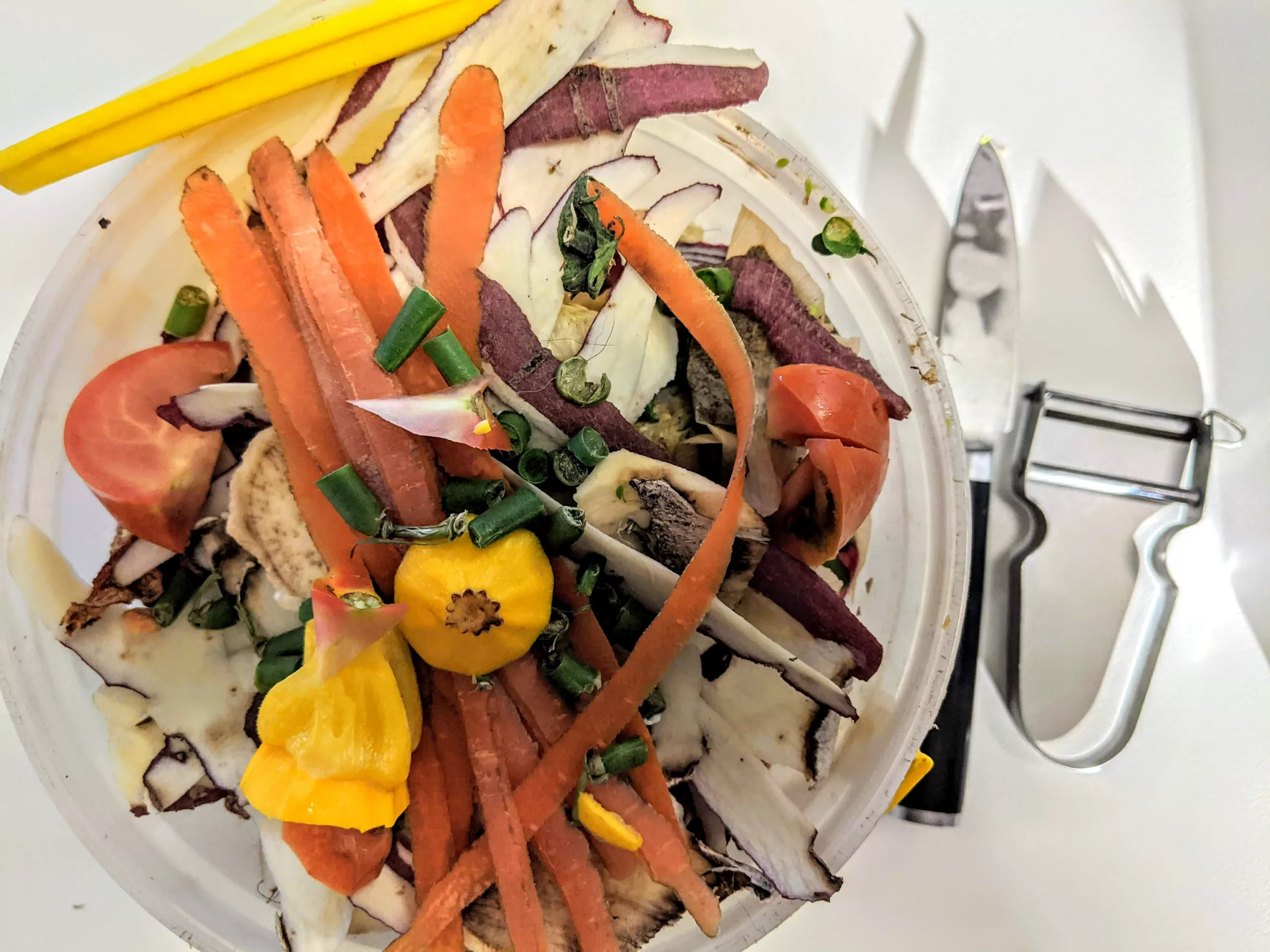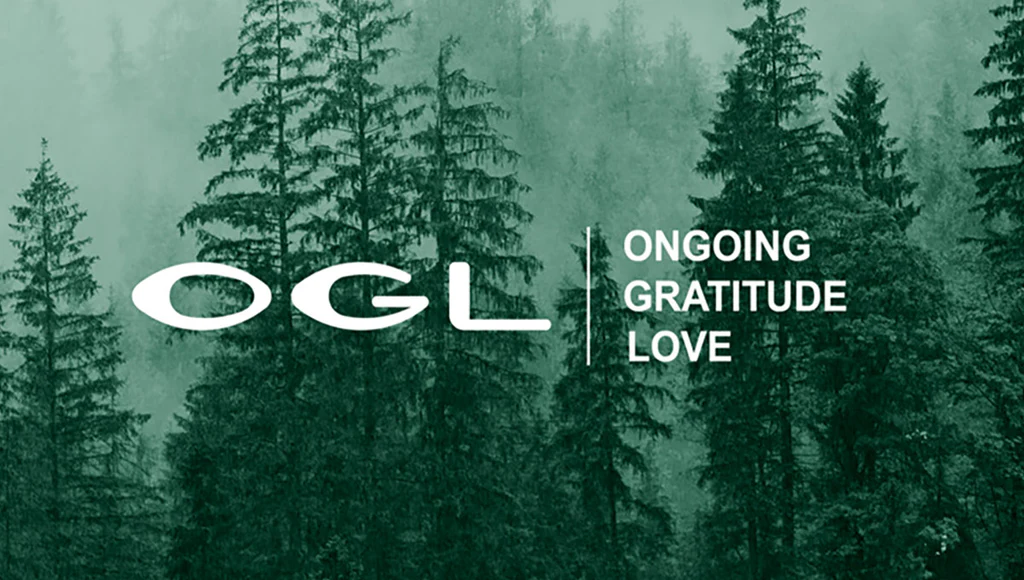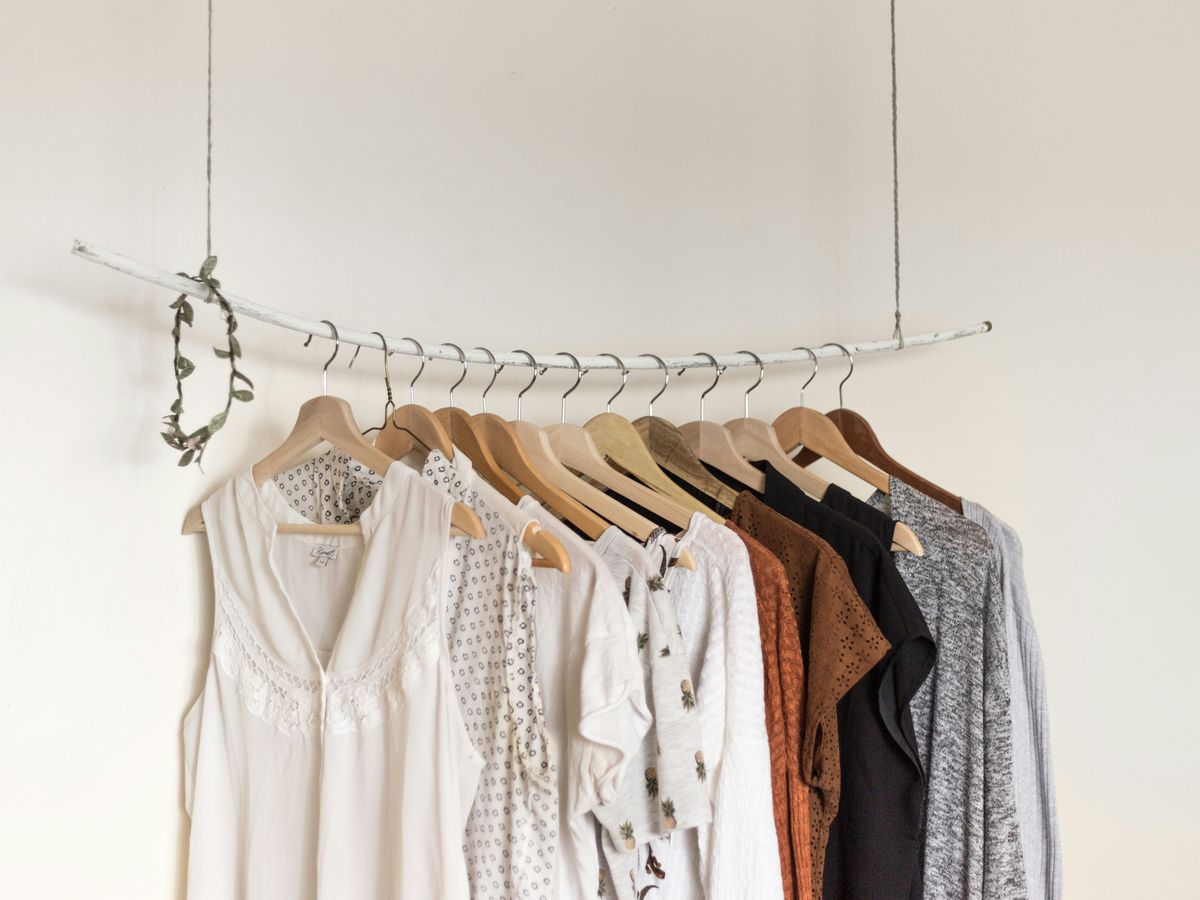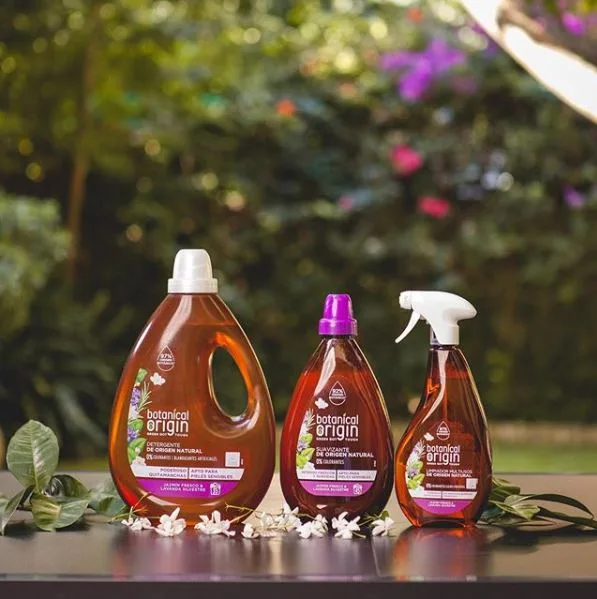One-third of the food produced globally for human consumption goes to waste. Zero waste living promotes an eco-friendly lifestyle of sending ’zero waste to landfills’. But the world we live in makes it impossible for us to generate zero waste. Instead, the movement emphasizes sending as little waste to landfills as possible. You can start your zero-waste journey by composting your kitchen waste.
Home composting can divert up to 150 kg of this waste per household annually, keeping it out of landfills. Also, composting provides an array of advantages that cannot be overlooked. Today, we’ll cover everything you need to know about composting, from the process to the necessary materials in order to start your compost bin.
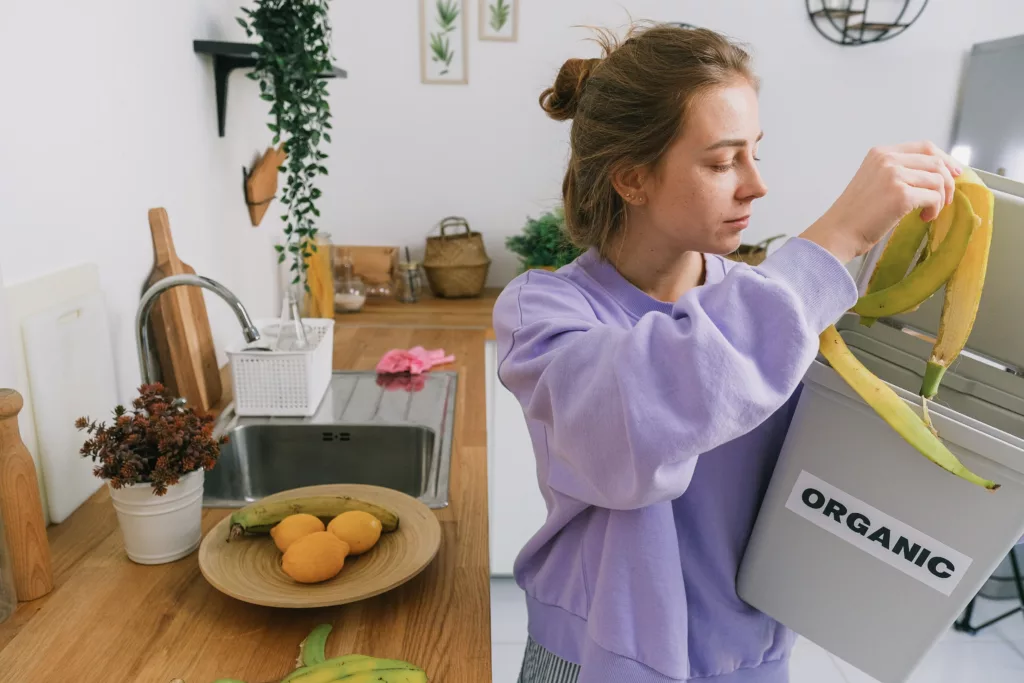
What is composting?
Simply put, composting is a controlled aerobic (requiring oxygen) process that converts organic material into a nutrient-rich soil-like mixture by breaking it down into simpler matter through decomposition (decaying or rotting). The end product – or finished compost is moist to the touch, dark and crumbly with an earthy smell.
You can start composting at home by merely using your kitchen waste and turning it into Black Gold. But before we delve into the process of creating your kitchen compost bin, let us explore the science behind composting and understand why the end product is commonly referred to as Black Gold!
What’s The Science Behind Composting?
Composting is a fascinating process that involves the biodegradation of solid organic waste into humus-like substances with the help of microorganisms like bacteria, fungi and actinomycetes in the presence of oxygen. The waste is transformed into a nutrient-rich material that the plants can easily take up with the help of microbes.
There are two types of composting – anaerobic (does not require oxygen) and aerobic (requiring oxygen):
Anaerobic composting occurs when there is a lack of oxygen or a limited supply. This uncontrolled process usually happens in landfills or piles of organic matter left unattended. Microorganisms become dominant and create intermediate compounds such as methane, hydrogen sulfide, and organic acids during the breakdown of waste. Because there is no oxygen, these compounds are not metabolized further and can produce an unpleasant odor. Anaerobic composting is a low-temperature process, which means it does not eliminate pathogens or weed seeds, which can cause issues. Although anaerobic composting requires minimal effort and reduces nutrient loss, its drawbacks often outweigh these benefits.
Aerobic composting takes place in the presence of ample oxygen. The aerobic microbes break down the organic waste to produce carbon dioxide, water, ammonia, and humus while releasing heat. Even though aerobic composting can create intermediate compounds such as organic acids, the microbes further break them down to prevent foul odors and phytotoxicity. The heat generated during the process accelerates the breakdown of proteins, fats, and complex carbs like cellulose. Hence the processing time is shorter, and all the disease-causing pathogens and weed seeds are destroyed. Although more nutrients are lost from the material, it is considered a more efficient and widely preferred composting method. So most of this article talks about aerobic composting.
Thermal Phases of Aerobic Composting

Your compost goes through three distinct thermal phases: mesophilic stage, thermophilic stage, and maturation stage.
The process begins with the formation of the pile. First, the mesophilic microbes grow with the optimum growth temperature range of 20-45 degrees Celsius. They feed on the readily available sugars and amino acids. During this process, they generate enough heat to a point where their own metabolic activities are suppressed.
Then thermophilic fungi and bacteria with an optimum growth temperature range of 50-70 degrees Celsius or more continue the decomposition process. They raise the temperature to 65 degrees Celsius or higher. This peak heating temperature is crucial to kill the disease-causing pathogen and weed seeds. The curing stage is followed by this, where the temperature decreases gradually. The start of this phase is identified when turning the pile no longer generates heat.
At this stage, another group of thermophilic fungi starts to grow. These fungi break down the cell wall material like hemicellulose and cellulose, bringing about the major phase of decomposition. Curing the compost is important to avoid the potential risks of using immature compost. These risks include nitrogen (N) deficiency, oxygen (O) deficiency, and toxic effects of organic acids on plants. By curing the compost, a safety net is created to ensure that these risks are minimized.
Eventually, the temperature declines to ambient. The process of composting is complete, and you have a uniform dark brown to black soil-like material in your hand. This process increases humus levels, decreases the Carbon to Nitrogen ratio, neutralizes pH, and boosts the exchange capacity of the material. You have your Black Gold ready!
What are the Environmental Benefits of Composting?
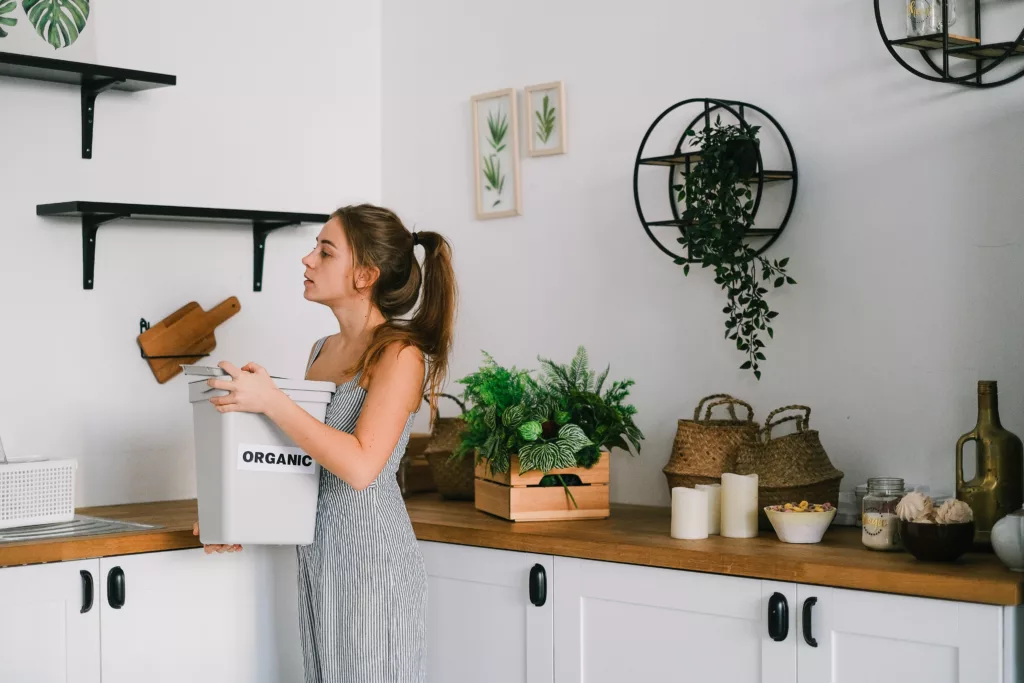
Throwing away your wasted food does not generate any benefit, as it is a waste wasted! But if this waste heads to your compost bin instead of a trash pile, it can have significant benefits. Let’s go over a few of the many benefits that composting has.
Control Erosion
We have lost one-third of the farmable land in the last 40 years due to soil erosion. Erosion happens when excess water runoff takes the top fertile layer of soil with it and, as a result, depletes the land. Compost acts like a sponge allowing water infiltration and moisture retention. Further, humus helps bind soil particles together, thus keeping the soil intact and preventing erosion.
Promotes Healthy Plant Growth
Healthy crops/plants are equal to healthy humans and a happy planet. All the good microbes present in the compost increase the soil’s nutrient retention capacity and help plants uptake them more easily, promoting good yield and healthy growth. Furthermore, the use of compost can reduce the dependence on chemical fertilizers that are harmful to plants, soil, and human health.
Improves Soil Structure
Compost is soil’s best friend. It is the most used soil amendment by farmers as it’s a rich source of organic matter, which improves soil structure by binding it together due to the presence of humus and thus increasing water filtration capacity and moisture content of the soil. The improved physio-chemical and biological properties make the soil more resistant to stress like droughts, diseases, and toxicity with a balanced pH.
Helps Filter Local Water & Groundwater Recharge
Compost can filter out 5 x its weight in water. In its ability to retain water and increased infiltration, compost provides plenty of water for good plant growth and also replenishes groundwater reservoirs and local water bodies. Surprisingly, it also helps improve water quality by filtering out 60-95% of pollutants present in the water. So by the time water gets back to the watershed, it is clean.
Reducing Waste and GHG Emissions
We produce billions of tons of waste every year. When organic waste is sent to landfills, it decomposes in anaerobic conditions to release methane, a 28X more potent GHG than carbon dioxide. But a good amount of waste sent to landfill is compostable and, if diverted, can help reduce certain GHG like methane. Thus solving two problems at once – reducing waste and helping tackle climate change.
Creates More Jobs & Reduce Cost of Waste Disposal
Apart from these, on a per-ton basis, compost-making employs 2X more workers than landfills and 4X more workers than incinerators. Therefore creating more jobs and also saves the cost of waste disposal, which is projected to reach 375 billion dollars by 2025.
The gains are not limited to the above list, and thus, the benefits associated with your organic waste are plenty for it to be wasted away or landfilled. So now it’s time to pick up that pitchfork and start your compost bin! Let’s go.
How to Set Up Your Zero Waste Kitchen Compost Bin?
Composting is a natural process, but you can speed it up by giving a little attention to aeration, mixing, moisture content, and pile building in your kitchen compost bin. Let’s go through a step-by-step process on how you can set up your kitchen compost bin.
A. Choosing the Right Compost Bin
A compost bin is designed to create an ideal environment for decomposition while keeping the process fuss-free and clean. A suitable compost bin has the following role to play:
- It keeps the waste close together so that the pile generates enough heat, and the process of decomposition is accelerated.
- It has enough aeration so that the microbes have oxygen to thrive.
These bins require a lid to keep away rain and rodents, which can cause a problem. But these containers also come with an additional bottom compartment or have an open bottom so that the compost can be harvested easily.
Bottomless bins have an additional advantage: the waste is in direct contact with the soil. Thus, it is easily accessible to microbes for breakdown.
B. Size and Capacity Considerations
While choosing the right size, it’s important to consider aspects of your household. The available space you have in your backyard or kitchen to keep your bin will differ from place to place. And you should choose the size accordingly. Also, keep in mind that the initial amount of organic waste in your kitchen compost bin will decrease by a significant amount. Usually, it is no more than half the initial height of the pile. Studies show that the volume of waste decreases by 70 to 80%.
Depending on these factors and the amount of waste your household generates, you can decide the correct size of the bin. Compost pails that are small in size can hold up to a gallon of scraps. Although they take up less space, they require more frequent emptying. On the other hand, compost buckets have a capacity of 5 gallons.
C. Types of Kitchen Compost Bins
There are different types of compost bins, and you can choose according to your requirements and convenience. The four main types of composting bins are:
1. Continuous Compost Bins
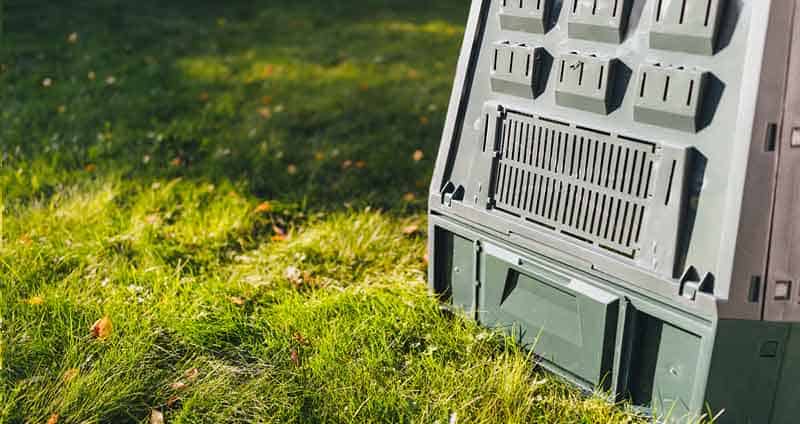
Credit: helpmecompost
These are also referred to as stationary bins, as they remain in the same place. Continuous bins can receive new organic matter at any time. They have multiple chambers, and their design allows for a continuous process, so you can harvest from the bottom chamber even if the top layers haven’t fully composted yet and keep adding the new waste from the top section.
Most of these bins are bottomless for easy recovery of compost. These bins can be used if you have a large backyard or enough space to keep the bin. The process of composting is slower and can take months. They are covered to keep the rodent and animals away.
2. Compost Tumblers or Batch Composter
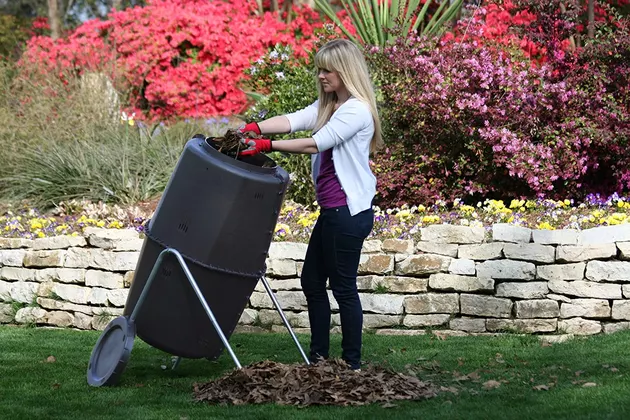
Credit: Amazon
A compost tumbler is a drum or barrel that sits on a stand and has a handle for rotation. When you turn the tumbler, it mixes and aerates the organic matter inside, which speeds up the decaying process due to increased air and movement.
The process is also known as batch composting, as it involves filling the container/tumbler all at once instead of adding ingredients continuously. Each batch commences with the correct combination of components and cooks until the decomposition process is finished.
They are smaller in size and do not have an open bottom like continuous composters. You can further kick-start the process by adding an inoculum or commercial starters in the prescribed quantity. They contain microbes to accelerate the process. A homemade replacement for the inoculum is sour buttermilk or curd.
3. Worm Composter
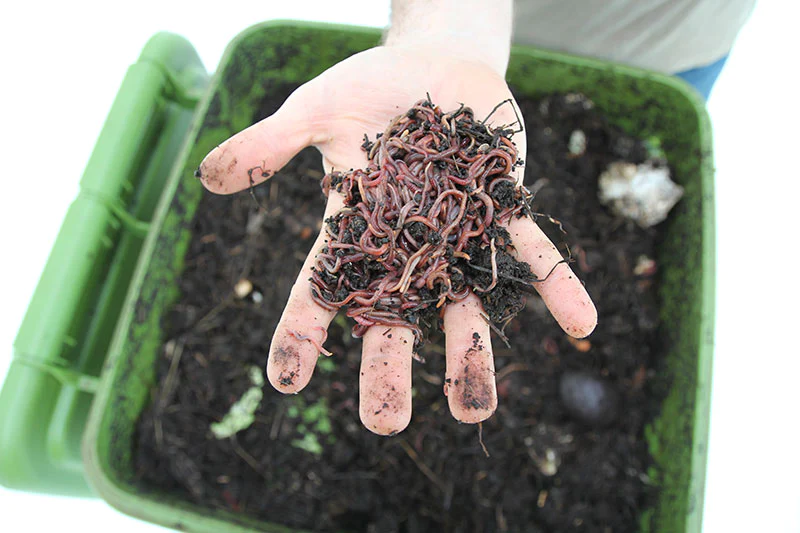
Credit: Nutshell Store
Vermiculture composters, also known as worm composters, utilize worms to transform waste into fertilizer. These compost bins follow a straightforward concept: worms consume organic matter, break it down, and excrete worm castings that are nutrient-rich and ideal for fertilizing your garden. Moreover, the worms aid in minimizing kitchen waste in landfills while accelerating the composting process.
If you want to begin vermicomposting, you will require a worm compost bin, bedding for the worms, and the creepy crawlies themselves. These bins are great for easy waste disposal, as long as you don’t mind working with worms.
D. Selecting The Ideal Location
Once you have started composting, the decision to choose an ideal place for your kitchen compost bin can be a headache. There are multiple factors that you need to consider before choosing the right place. Let’s find out what to keep in mind while selecting a place indoors or outdoors.
Indoor Location Considerations
When you have recently started composting, you would want to make sure that the bin is placed in a location that is easy to access; otherwise, you won’t feel like composting. A place under your sink or on the kitchen counter would be preferable. And also, you will have many available options in case of choosing an indoor bin. Maybe you can choose the size depending on the location you want to keep it in.
Make sure you have enough space to handle your compost properly, like turning the pile and aerating it. Composting is rewarding but definitely not pretty. It can sometimes start smelling. In this case, you can consider putting it in the freezer as it might help with the smell or someplace near a window.
Outdoor Location Considerations
Ideally, your bin should be in a well-drained and semi-shade area, as this would make all the difference in the quality and frequency of your compost. The spot should not be too cold; this would slow down the process of composting. And if it’s too hot, then it will dry out the compost areas, which is also not desirable. Similarly, too much wind will also dry it out. Choose a place with natural shade and optimum temperature.
Keep your compost bin near your kitchen and garden, as ease of access makes all the difference when choosing to compost, and proximity to the garden makes it convenient to apply it once it’s ready. Choosing a well-drained area is important to make sure that your compost is not a slimy mess after rain. Also, make sure that the bin is not placed close to your neighbor’s fence as the leachate, smell, and rodent might cause problems for them.
Keep in mind these considerations and experiment a little bit before choosing the final spot for your bin!
E. What to Add & What to Avoid?
When choosing what to put in your compost pile, you must be very mindful; otherwise, you will mess the process up, and there won’t be any compost, only a bad-smelling pile of waste. Here’s a table to help you with what to put and what not to put in your kitchen compost bin at home.
| What You Can Compost at Home | What You Cannot Compost at Home |
|---|---|
| Carbon-rich material – ‘Browns’ | meat scraps, bones, whole eggs, |
| Food and vegetable scraps | Pet waste and cat litter |
| Leaves & grass clippings,, and | Fats, oils and greases |
| Eggshells (crushed) | Cheese or dairy products |
| finely chopped or shred tree and shrub prunings | Glossy paper |
| Coffee grounds and paper filters | Aggressive weeds/weeds with seeds |
| Paper tea bags (no staples) | Compostable food service ware and compostable bags* |
| Carbon rich material – ‘Browns’ | Cooked food (small amounts are fine) |
| straw and hay, sawdust | Dryer lint |
| Dry leaves | Glossy paper |
| Shredded paper (non-glossy, not colored) and shredded brown bags | Treated or painted wood |
| Shredded cardboard (no wax coating, tape, or glue) | Diseased and pest-infested plants |
*Composting piles in the backyard usually don’t reach the required temperature to fully decompose certified compostable food service ware and bags. These products are intended to be composted at commercial composting facilities.
F. How to Start Your Home Composting?
You can easily start composting at home, and it can also be a good family activity. All you need to get started are the following things:

The basic ingredients for composting are:
Composting microbes require nitrogen for growth and reproduction and carbon for energy and carbohydrates. They also need water to facilitate digestion and movement and, like humans, require oxygen for respiration.
To ensure the microbes decomposing your compost are happy, providing them with a balanced diet of carbon and nitrogen materials is important. A general guideline is to mix 2-3 parts of brown with 1 part of green by volume. For instance, if you have a bucket of food scraps, you will require 2-3 buckets of browns like fall leaves.

Troubleshooting Common Issues
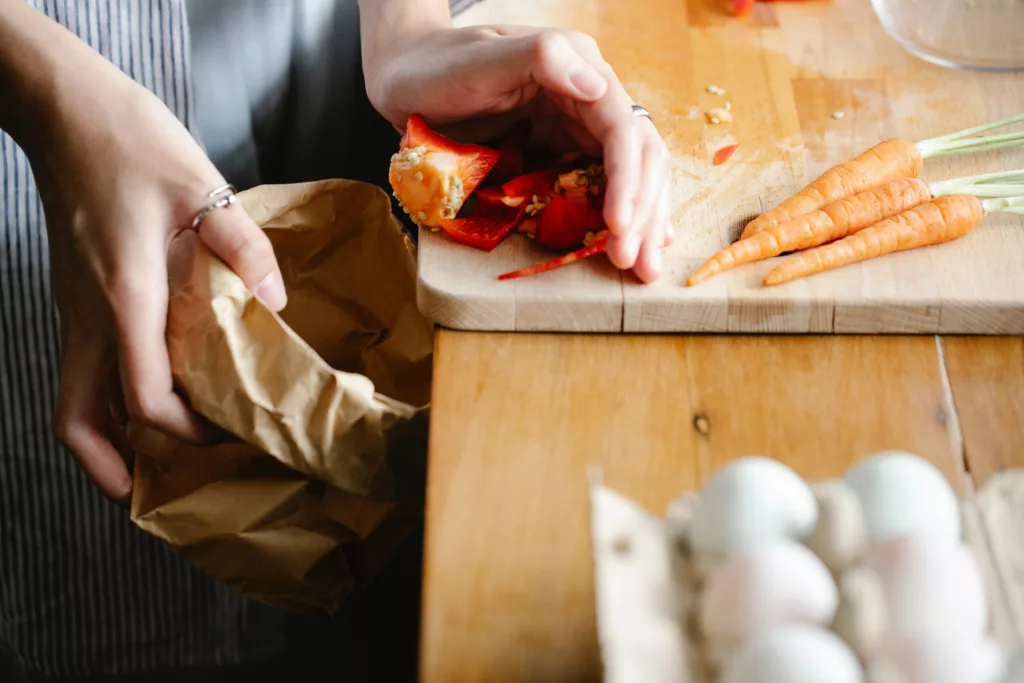
Starting a kitchen compost bin is simple, but neglecting its upkeep can lead to a problematic situation. To prevent composting issues and maximize the benefits of your garden, we have listed a few common problems and their solutions.
Dealings With Pests
Beware of flies, maggots, and ants! Flies have a tendency to lay eggs in decomposing organic substances. To prevent this, cut up any plant materials you add to your compost pile into tiny pieces and cover all kitchen scraps and organic matter with a layer of soil or browns. You can also use a mesh screen to enclose the entire pile and keep flying pests like flies out of the compost. Though having bugs and worms isn’t always a problem as they help the process of decomposition. But there are certain types of creepy crawlies that you should be aware of, like snails and slugs.
Dealing With Bad Odour
A properly functioning compost heap should have an earthy smell, not a foul one. If the compost smells like sewage, it requires improved aeration and more frequent stirring. When your compost has an ammonia-like scent, it indicates an excess of greens (an overabundance of nitrogen released as food scraps decay) in the mixture and insufficient brown matter. To fix this problem, mix in more soil.
Pile Too Dry
Ensuring that your compost pile has sufficient water to prevent it from drying out is crucial to aid in the decomposition process. As you build the layers of your compost heap, it is essential to add an ample amount of water. Usually, you do not have the problem of excess moisture in your pile, but it can dry out easily.
Conclusion
Starting your kitchen compost bin might feel like rocket science initially, but it is not. The science of composting is fascinating, and the benefits are tremendous. Plus, your contribution will be invaluable to the planet and people. We have compiled answers to every possible doubt you might have when you start composting, from the things you need to get started to the process and its potential benefits. Good luck with starting your compost bin. Practice makes a man perfect!
Transform your home and garden with eco-friendly practices! Dive into our Home & Lifestyle blogs for expert tips on composting and gardening.
